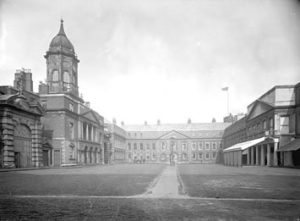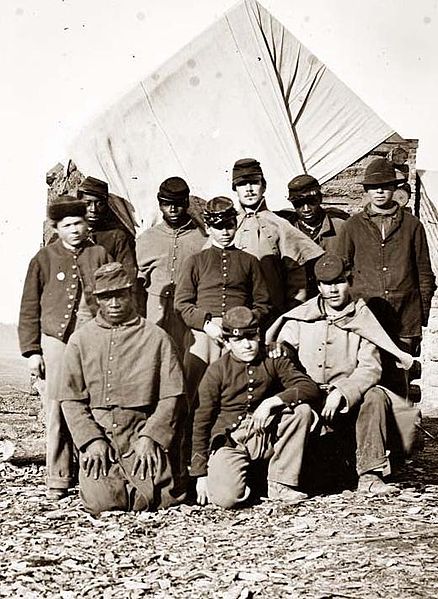Background
Dublin Castle is one of the oldest buildings in Ireland, and is still in use today. Built in 1204, Dublin Castle has had many roles throughout the last 800 years (“Dublin Castle: History & Education”). This was a site greatly associated with British power and the influence of the English monarchy. It has served as a royal residence, a military base, and as offices for many British officials throughout the years. After the free state of Ireland was formed in 1922, this castle transitioned from serving the government of England to that of Ireland, and has been used for government functions since then (“Dublin Castle: History & Education”).

Commemoration History
Dublin Castle played a noteworthy role in the Easter Rising. The Monday of Easter Week was a bank holiday, so many British officials were not at Dublin Castle that day (O’Broin, 12). Early that morning, 25 members of the Irish Citizen Army stormed Dublin Castle and began firing upon it. They were able to seize the entrance and the guard room, and killed a police officer in the process (O’Broin, 15). Hearing the gunshots outside, members of the British army closed the castle gates to keep additional insurgents out (Kostick, 115). Members of the ICA waited for reinforcements and provisions from other rebels. Additional British troops were dispatched to the castle to defend the British government and English pride itself. While other Irish troops marched up to Dublin Castle in an attempt to reclaim it, they were ultimately unsuccessful and the castle fell back under British control (Kostick, 116).Much like the siege of Harpers Ferry in the Civil War, these attacks were short-lived. Following WWI, parts of the state apartments in the castle were converted into first-aid stations to treat troops. Following the Rising, it was here that James Connolly was held as a prisoner before he was executed (Costello, 145).

Dublin Castle is where some of the very first deaths of the rebellion occurred. It was a daring and bold move for the ICA to attack a building so synonymous with British power (Costello, 144). An attack upon Dublin Castle was a direct attack on England itself. This attack represented just how passionate and determined these Irish rebels were. This siege could have been a key victory for the rebels and perhaps changed the outcome of the week had it been successful. It is one of the many “what ifs” of the rebellion (“Dublin Castle: History & Education”). Had Irishmen and women been able to successfully overtake the center of the British government, perhaps British troops would have surrendered and the Rising would have played out much differently.
Significance Today
Today, Dublin Castle is used for a wide variety of functions pertaining to the Irish government. For many years it was the home of the Four Courts, Ireland’s judicial and court system. (“Dublin Castle: History & Education”). Dublin Castle was rebuilt in 1962, and has hosted a number of state visits, inaugurations of the President, and policy launches. It has become a popular tourist attraction where people come to learn of its role in the Rising as well as a multitude of other historical events (“Dublin Castle: History & Education”). Dublin Castle remains a beloved and historical site pertaining to both Irish history and to the influence of the British in Ireland for so many years.

Connection to the Civil War
The leaders and rebels of the Rising believed that if they could overtake Dublin Castle, then they would be able to overthrow the British government. However, they were underprepared for the resistance they met, and did not have the same manpower as the British (Hagerman, 27). This is a stark difference from the troops during the Civil War. Both the Confederate and Union troops used modern and advanced tactics to avoid failure. Those in the Civil War had the luxury of large battalions and regiments, and could afford to lose men if they had to (Hagerman, 29). Both sides had skillfully trained generals and expertly planned methods to ensure success. This was not as true for the Rising. The Rising failed to generate the same level of passion and numbers, and as a result the events of Easter Week ultimately proved unsuccessful. This movement was not as popular outside of Dublin, which is part of the reason why it failed (“The 1916 Rising”). The Civil War spanned across the country whereas the Rising was contained mostly to one city. Easter Week is often looked at as a failed but noble effort by men who were no match for the British. The Civil War however was bloodier and more successful because both sides were well trained and more devoted to their cause.

